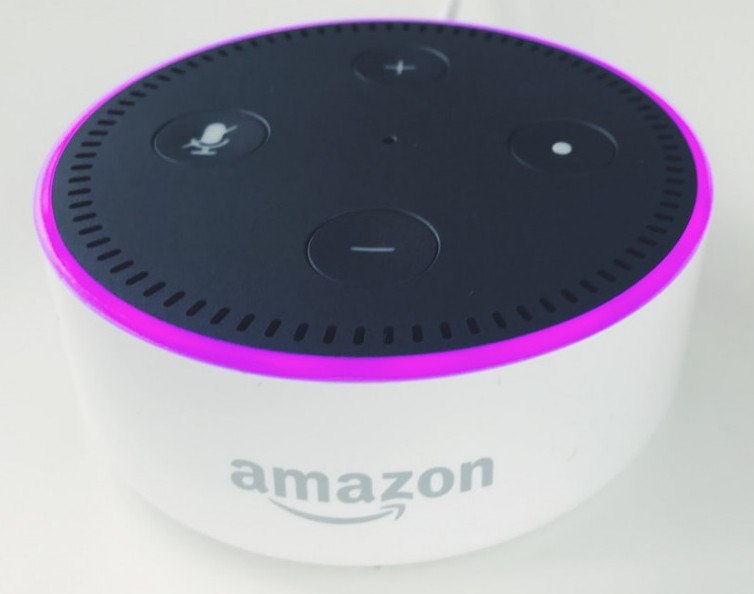The consumer electronics market is constantly evolving, with new and innovative products hitting the shelves all the time. In the next five years, these products will become more powerful, innovative, user-friendly, and integrated with AI capabilities.
Here are some of the hottest electronics products in the market right now:
(1) Wireless Earbuds: True wireless earbuds have become incredibly popular, offering a convenient and clutter-free way to enjoy music, podcasts, and audiobooks. Leading brands like Apple, Samsung, and Sony offer a range of options with features like active noise cancellation, long battery life, and superior sound quality.
We could see more powerful features coming out with:
- Enhanced audio quality with personalized sound profiles
- Adaptive noise cancellation that adjusts to different environments
- Real-time language translation for seamless communication
- Health monitoring features like heart rate and blood oxygen tracking
Below are some examples of how these Wireless Earbuds could be used in the next five years with more advanced features and AI-built-in capabilities:
- Real-time language translation: Imagine walking through a foreign city and having your earbuds seamlessly translate conversations and signage in real time, allowing you to navigate and communicate with ease.
- Personalized sound enhancement: AI-powered algorithms could analyze your hearing profile and environmental conditions to optimize audio settings, providing a tailored listening experience that enhances clarity and reduces listening fatigue.
- Biometric monitoring and feedback: Earbuds could monitor heart rate, blood oxygen levels, and other vital signs, providing real-time feedback during workouts and alerting users to potential health concerns.

(2) Smartwatches: Smartwatches have evolved from simple fitness trackers to versatile wearable devices that can handle calls, messages, notifications, and a variety of apps. Popular models like the Apple Watch, Samsung Galaxy Watch, and Fitbit Versa offer health tracking, GPS, and even cellular connectivity.
Smartwatches may undergo significant advancements in the next five years with the following features:
- Non-invasive blood glucose monitoring for diabetes management
- Advanced sleep tracking and analysis for sleep improvement
- Stress detection and management techniques
- Personalized fitness coaching and workout recommendations
Here are a few instances of how Smartwatches might find practical applications in the coming five years, featuring enhanced capabilities and integrated AI functionalities
- Predictive health advisor: AI-powered analysis of health data could provide personalized insights into potential health risks, suggesting preventive measures or recommending consultations with healthcare providers.
- Gesture-based control: Imagine controlling your smartwatch with subtle hand gestures, allowing for hands-free operation while driving, cooking, or engaging in other activities.
- Emergency assistance: Smartwatches could detect falls or accidents and automatically alert emergency services or designated contacts, providing real-time location and health data for prompt assistance.
(3) Virtual Reality (VR) Headsets: VR headsets are becoming more accessible and affordable, allowing users to immerse themselves in virtual worlds for gaming, entertainment, and even education. Meta Quest 3, HTC Vive Cosmos, and PlayStation VR are among the popular choices for immersive VR experiences.
These are some potential new features you may find on them:
- Increased resolution and field of view for more realistic visuals
- Haptic feedback for immersive touch sensations
- Eye-tracking for more natural interactions
- Social VR experiences for virtual gatherings and collaborations
Below are some examples of how Virtual Reality Headsets could be applied in the near future with advanced features and built-in AI capabilities:
- Virtual workspaces: VR could transform remote work, creating immersive virtual workspaces where colleagues can collaborate, brainstorm, and share presentations in a shared virtual environment.
- Empathy training: VR simulations could be used to train individuals in empathy and emotional intelligence, allowing them to experience different perspectives and understand diverse viewpoints.
- Virtual tourism: Imagine exploring far-off destinations, historical sites, or natural wonders from the comfort of your home through immersive VR experiences that replicate the sights, sounds, and even smells of these locations.
(4) Drones: Drones have captured the imagination of hobbyists and professionals alike, offering aerial photography, videography, and even racing capabilities. DJI Mavic 3, Autel Robotics EVO II Pro, and Skydio 2 are among the top-rated drones for capturing stunning aerial footage.
You may see innovative features like:
- Extended flight time for longer missions
- Obstacle avoidance and autonomous navigation
- Advanced object recognition and tracking
- Delivery capabilities for transporting small packages
Here are a few ways Drones can revolutionize our world with advanced features and integrated AI technologies in the coming years:
- Search and rescue operations: Drones equipped with advanced sensors and AI could autonomously scan disaster zones or remote areas to locate missing persons or assess damage, providing crucial information for rescue teams.
- Precision agriculture: Drones could monitor crop health, detect pests or diseases, and optimize irrigation and fertilization, leading to increased yields and reduced environmental impact.
- Infrastructure inspection: Drones could inspect bridges, power lines, pipelines, and other infrastructure for defects or damage, reducing the risk of failures and improving maintenance efficiency.

(5) Robot Vacuums: Robot vacuums have become increasingly sophisticated, with advanced navigation, obstacle avoidance, and even self-emptying capabilities. Popular models like the iRobot Roomba i7+, Roborock Q5, and Ecovacs Deebot X2 Omni offer hands-off cleaning convenience.
In the next 5 years, you can see the following features:
- Object recognition and manipulation for picking up items
- Mapping and cleaning multiple floors in a home
- Self-maintenance and troubleshooting for minimal user intervention
- Integration with smart home systems for coordinated cleaning schedules
Here are some examples of how the next-generation Robot Vacuum is making household chores a breeze with its intelligent AI features, revolutionizing cleaning tasks in real-world applications:
- Pet care assistance: Robot vacuums could monitor pet activity, detect accidents or unusual behaviors, and even dispense treats or play with pets, providing companionship and care for furry friends.
- Home security patrol: Robot vacuums could integrate with security systems to patrol homes when unoccupied, detecting anomalies like open doors or windows and alerting homeowners or security providers.
- Personalized cleaning routines: AI-powered vacuums could learn user preferences and adapt cleaning schedules and methods based on room usage, presence of pets or children, and specific cleaning needs.

(6) Smart Home Devices: Smart home devices are transforming homes into connected ecosystems, allowing users to control lights, thermostats, locks, and other appliances remotely or with voice commands. Amazon Echo Show 15, Google Nest Hub Max, and Apple HomePod 2 are popular smart speakers that act as hubs for smart home systems.
In the future, more advanced features are likely to appear:
- Predictive automation based on user habits and preferences
- Personalized energy management for optimizing consumption
- Enhanced security features with facial recognition and anomaly detection
- Ambient AI that adapts to user needs and preferences without explicit commands
These are a few instances where the future of smart home devices with cutting-edge AI features and innovative performance you can expect to see:
- Personalized energy management: AI could analyze energy consumption patterns and adjust thermostats, lighting, and appliance usage to optimize energy efficiency and reduce utility costs.
- Ambient AI assistance: Smart home devices could anticipate user needs and preferences, adjusting lighting, temperature, music, and other settings without explicit commands, creating a seamless and personalized environment.
- Elderly care monitoring: Smart home sensors could monitor the well-being of elderly individuals living independently, detecting falls, changes in activity patterns, or potential health concerns, and alerting caregivers or emergency services.

(7) Gaming Consoles: The latest generation of gaming consoles, including PlayStation 5, Xbox Series X, and Nintendo Switch OLED, offer immersive gaming experiences with stunning graphics, powerful processors, and innovative controllers.
Below are features that will appear on the products:
- Cloud gaming for seamless access to high-performance games
- Personalized gaming experiences based on player preferences
- AI-powered game assistants for strategy and decision-making
- Immersive haptic feedback and virtual reality integration
Here’s a glimpse into what lies ahead for gaming consoles in the next 5 years, showcasing advanced AI features and innovative performance in action:
- AI-powered game companions: AI-driven characters could act as companions or advisors in games, providing personalized guidance, adapting to player strategies, and enhancing the storytelling experience.
- Virtual reality integration: Gaming consoles could seamlessly integrate with VR headsets, allowing players to immerse themselves in virtual worlds and experience games from a first-person perspective.
- Cloud gaming advancements: Cloud gaming could eliminate the need for powerful hardware, allowing players to access high-end games on any device with an internet connection.

(8) Laptops with OLED Displays: OLED displays are becoming more common in laptops, offering superior image quality with vibrant colors, deep blacks, and high contrast ratios. Laptops like the Dell XPS 13 OLED, ASUS Zenbook 14X OLED, and Lenovo ThinkPad P1 Gen 6 are among the first to feature these stunning displays.
In the next 5 years we shall see:
- Foldable and flexible displays for versatile form factors
- Improved battery efficiency for longer runtimes
- Integrated AI for enhanced productivity and creativity
- Personalized user interfaces that adapt to individual needs
Here are some examples of how the next-gen laptops with OLED displays are transforming your computing experience, combining advanced technology with real-life visual brilliance:
- Adaptive user interfaces: AI could analyze user behavior and preferences to personalize the user interface, adapting menus, shortcuts, and settings based on individual needs and usage patterns.
- Foldable and versatile form factors: Laptops with foldable OLED displays could transform into tablets or even smartphones, offering versatility and portability for various tasks and environments.
- Augmented reality integration: OLED displays could integrate with augmented reality technology, overlaying digital information in the real world, and enhancing productivity, creativity, and education.

These are 8 exciting electronics products available in the market among many that you can purchase today. With constant innovation and advancements, consumers can expect even more groundbreaking devices and experiences in the years to come.




